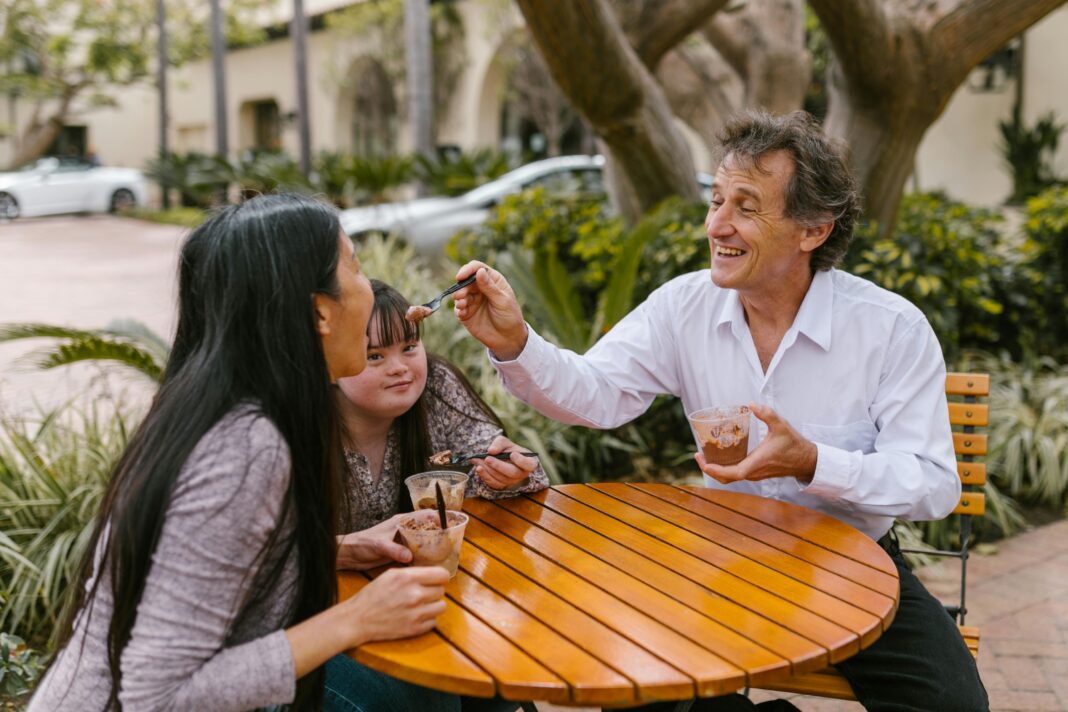Impulsivity is one of the most challenging and pervasive symptoms of Attention-Deficit/Hyperactivity Disorder (ADHD), creating significant obstacles in daily functioning, relationships, and long-term success. Unlike occasional impulsive behaviors that everyone experiences, ADHD-related impulsivity is chronic, intense, and neurologically based, requiring specialized strategies for effective management. This comprehensive guide explores the science behind ADHD impulsivity, its real-world impacts, and evidence-based techniques to help individuals gain better control over their impulsive tendencies.

Understanding ADHD and Impulsivity: The Neurological Basis
To properly manage impulsivity in ADHD, we must first understand its roots in brain function and neurochemistry. Research using fMRI scans shows that individuals with ADHD have measurable differences in brain structure and activity, particularly in regions responsible for executive functioning:
Prefrontal Cortex Dysfunction
The prefrontal cortex acts as the brain’s “control center” for:
- Decision-making processes
- Impulse inhibition
- Emotional regulation
- Working memory
- Task prioritization
In ADHD, this area shows reduced activity and slower maturation, which explains why stopping to think before acting can be so difficult. Studies from the National Institutes of Health indicate the prefrontal cortex in ADHD individuals develops approximately 2-3 years more slowly than in neurotypical peers.
Dopamine and Norepinephrine Imbalance
These crucial neurotransmitters are responsible for:
- Reward processing
- Motivation
- Attention regulation
- Behavioral inhibition
The ADHD brain has fewer dopamine receptors and transporters, leading to what scientists call a “reward deficiency syndrome.” This creates a constant search for immediate stimulation and makes delayed gratification exceptionally challenging. Pharmaceutical treatments for ADHD primarily work by increasing dopamine and norepinephrine availability in the synaptic cleft.
Impaired Brain Connectivity
Diffusion tensor imaging reveals weaker connections between:
- The prefrontal cortex (control center)
- The limbic system (emotional center)
- The basal ganglia (habit formation)
This disrupted communication helps explain why emotional impulses often override rational thought in ADHD, and why habitual impulsive behaviors become so entrenched.
Comprehensive Manifestations of ADHD Impulsivity
Impulsivity in ADHD manifests across multiple domains of life, often creating a ripple effect of consequences:
Verbal Impulsivity
- Interrupting conversations frequently
- Blurting out answers before questions are complete
- Speaking without considering social appropriateness
- Difficulty waiting for turns in discussions
- Oversharing personal information
Emotional Impulsivity
- Quick temper outbursts
- Extreme emotional reactivity
- Difficulty calming down after becoming upset
- Rapid mood swings
- Impulsive crying or laughing
Behavioral Impulsivity
- Reckless driving behaviors
- Impulsive spending/shopping
- Binge eating or substance use
- Starting projects without planning
- Frequently changing jobs or relationships
- Engaging in risky sexual behaviors
Cognitive Impulsivity
- Making snap judgments
- Difficulty weighing pros and cons
- Trouble learning from mistakes
- Jumping to conclusions
- Poor risk assessment
Evidence-Based Strategies for Managing Impulsivity
Behavioral and Psychological Interventions
Cognitive Behavioral Therapy (CBT) Techniques
CBT helps rewire impulsive thought patterns through:
- Cognitive restructuring: Identifying and challenging automatic impulsive thoughts
- Behavioral experiments: Testing outcomes of delayed vs. immediate responses
- Skill building: Developing concrete strategies for common impulsive scenarios
A 2022 meta-analysis in the Journal of Psychiatric Research found CBT reduced ADHD impulsivity symptoms by 42-58% across 23 clinical trials.
Dialectical Behavior Therapy (DBT) Skills
Originally developed for borderline personality disorder, DBT has proven highly effective for ADHD impulsivity through:
- Distress tolerance: Learning to sit with uncomfortable urges
- Emotion regulation: Reducing emotional impulsivity
- Interpersonal effectiveness: Improving social impulse control
- Mindfulness: Increasing present-moment awareness
Behavioral Modification Strategies
- The 10-Second Rule: Mandatory pause before any significant action
- Impulse logging: Tracking impulsive episodes to identify patterns
- Environmental engineering: Removing temptations from immediate surroundings
- Accountability systems: External checks on impulsive behaviors
Pharmacological Approaches
Stimulant Medications
- Methylphenidate (Ritalin, Concerta): Blocks dopamine reuptake
- Amphetamines (Adderall, Vyvanse): Increases dopamine release
- Mechanism: Enhance prefrontal cortex function to improve “braking” ability
Clinical studies show stimulants reduce impulsivity by 50-70% in properly medicated individuals.
Non-Stimulant Options
- Atomoxetine (Strattera): Norepinephrine reuptake inhibitor
- Guanfacine (Intuniv): Alpha-2 agonist that calms overactive neural circuits
- Bupropion (Wellbutrin): Dopamine/norepinephrine reuptake inhibitor
Emerging Pharmacological Treatments
- Dasotraline: Newer dopamine/norepinephrine reuptake inhibitor
- Centanafadine: Triple reuptake inhibitor in clinical trials
- NMDA receptor modulators: Targeting glutamatergic system
Lifestyle Modifications and Complementary Approaches
Nutritional Interventions
- Protein-rich breakfasts: Support dopamine production
- Omega-3 fatty acids: Improve neuronal membrane fluidity
- Zinc and magnesium: Cofactors for neurotransmitter synthesis
- Blood sugar stabilization: Prevent impulse-triggering crashes
Exercise Protocols
- Aerobic exercise: 30-45 minutes daily boosts BDNF and dopamine
- Martial arts: Combines movement with impulse control training
- Yoga: Enhances mind-body awareness and self-regulation
Sleep Optimization
- Consistent 7-9 hour sleep schedule
- Sleep hygiene practices (cool, dark room; no screens before bed)
- Addressing common ADHD sleep disorders (delayed sleep phase, restless legs)
Technological and Environmental Supports
Digital Tools
- Freedom/StayFocusd: Block distracting websites/apps
- TimeTimer: Visual time management aid
- Brain.fm: Neuroscientist-designed focus music
Physical Environment Adjustments
- Designated “pause spaces” in home/work environments
- Visual reminders of goals and values
- Organizational systems to reduce decision fatigue
Specialized Approaches for Different Age Groups
Managing Childhood ADHD Impulsivity
- Parent training in behavior management
- School accommodations (movement breaks, fidget tools)
- Social skills training groups
- Play therapy techniques
Adolescent-Specific Strategies
- Driving safety programs
- Executive function coaching
- Peer mentoring initiatives
- Contingency management systems
Adult ADHD Management
- Workplace accommodations
- Financial management tools
- Relationship counseling approaches
- Time management systems
Long-Term Maintenance and Relapse Prevention
Developing sustainable systems for ongoing impulse control:
- Regular therapy “booster” sessions
- Medication adherence strategies
- Support group participation
- Progress tracking and adjustment
FAQs on ADHD Impulsivity Management
1. Can ADHD impulsivity be completely eliminated?
While neurological differences remain, symptoms can be reduced to non-problematic levels through comprehensive treatment.
2. How long does it take to see improvements?
Medication effects may be noticed within hours, while behavioral changes typically require 6-12 weeks of consistent practice.
3. Are there any new breakthrough treatments?
Emerging research on neurofeedback, transcranial stimulation, and gut-brain axis interventions shows promise but requires more study.
4. Why do some strategies stop working over time?
The ADHD brain adapts to routines, requiring periodic strategy refreshes and novel approaches to maintain effectiveness.
5. Can you develop ADHD impulsivity later in life?
While ADHD is neurodevelopmental, significant life stressors or brain injuries can produce similar symptoms requiring evaluation.
Implementing Your Personalized Impulse Management Plan
Creating an effective approach requires:
- Professional assessment to identify your specific impulse patterns
- Tailored combination of therapies and medications
- Gradual implementation of lifestyle changes
- Ongoing monitoring and adjustment
- Building a support network
Remember that progress is non-linear – what matters is consistent effort and willingness to adapt strategies as needed. With proper understanding and tools, individuals with ADHD can achieve remarkable control over impulsive tendencies and significantly improve their quality of life.

